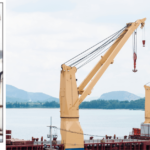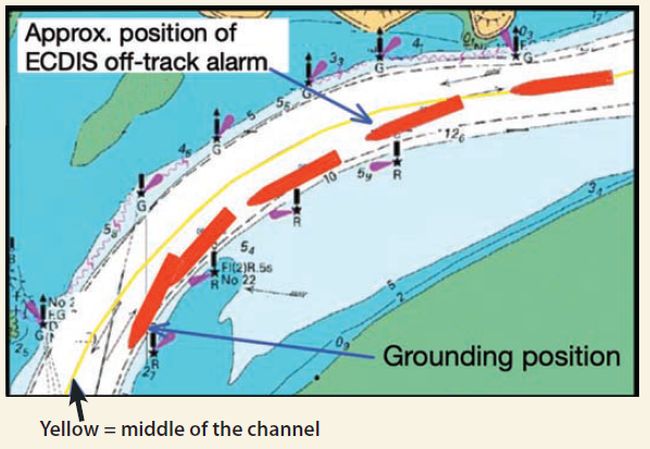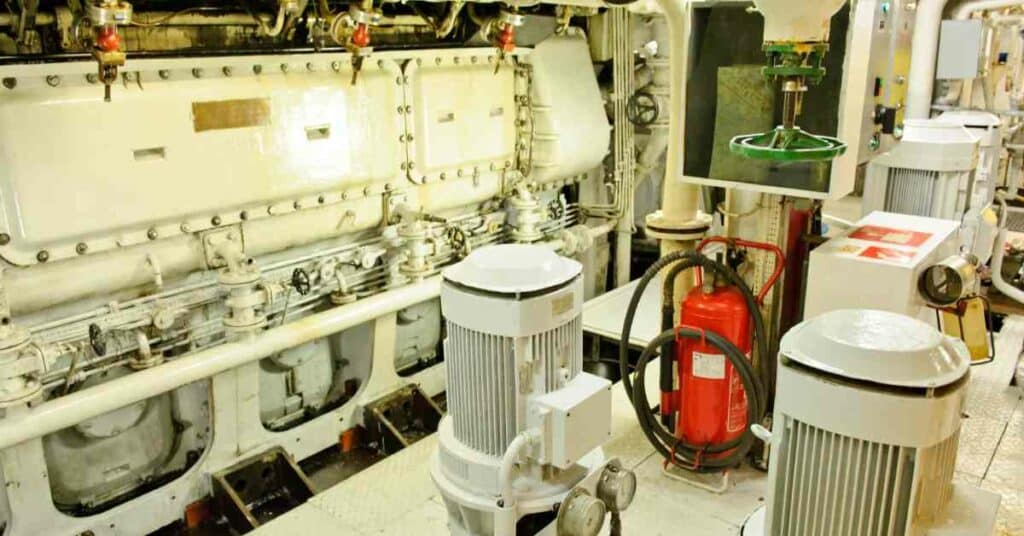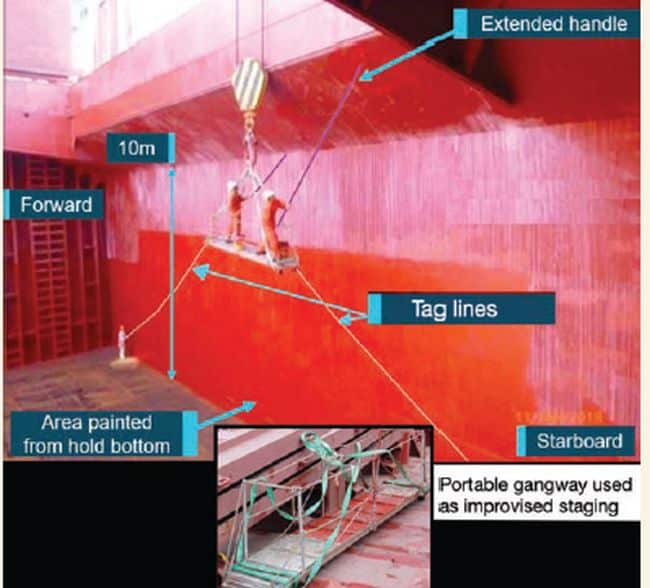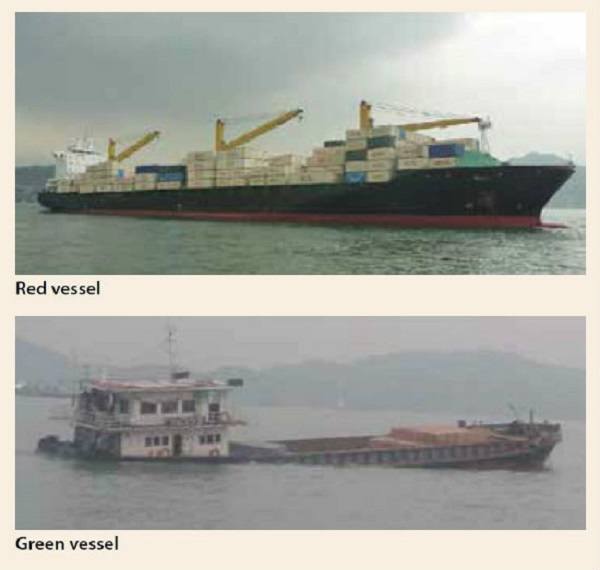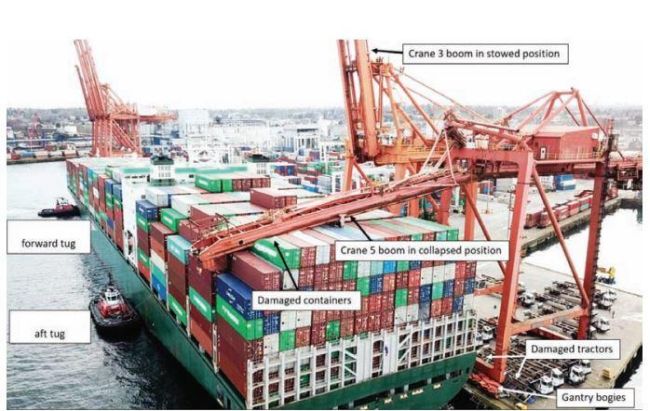Real Life Incident: Control Your Control Wire
A vessel’s lifeboat with crew on board was being lowered to the water when the remote control lowering wire suddenly parted. Poor winch wire spooling under the outer layers led to a wire kink, creating a weak spot that contributed to the wire failure. The consequences in this instance were not serious, as the broken wire simply meant the brake was re-applied. However, had this been a real abandon ship, the consequences could have been more serious.
The remote control wire was replaced with an extra wire found on board, and another test was carried out the next day. The lifeboat crew boarded and the coxswain used the remote control wire to lift the brake and begin the descent. Again, the control wire failed to spool smoothly, and an unexpected pay-out of the control wire led to the winch brake prematurely engaging. The lifeboat stopped lowering and swung erratically above the embarkation deck.
Seconds later, the swinging motion caused the wire to regain tension. This lifted the winch brake arm and caused the lifeboat to lower again, still swinging. As the lifeboat swung, the skeg keel caught on the deck edge, and the lifeboat listed by more than 90°, as seen in the photo. A crewmember on deck quickly activated the winch brake lever to save the situation. Had the lifeboat inverted further the consequences could have been catastrophic.
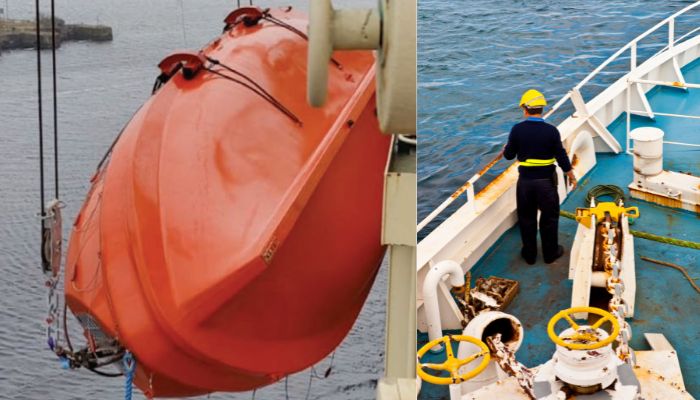
An internal company investigation identified that the crew did not follow existing company policy, which required a test lowering without crew prior to embarking crew. The company’s policy is based on the recommendations contained within MSC.1-Circ.1578, Guidelines on Safety During Abandon Ship Drills Using Lifeboats. While a ‘test owering’ may not have prevented these incidents, it would have provided an opportunity to identify the poor spooling of the wire and prompted corrective action without risk to crew.
owering’ may not have prevented these incidents, it would have provided an opportunity to identify the poor spooling of the wire and prompted corrective action without risk to crew.
Lessons learned
Ship’s crew should conduct a thorough visual inspection of lifeboat launching systems and perform a test lowering before carrying out operations with crew on board. Pay special attention to the following inspection points:
- Verify the proper spooling of the remote control wire, expand inspection as necessary.
- Verify that the remote control wire weight is in the correct position. If the weight is very close to the top of the lifeboat, this may indicate the remote control wire is too long.
- Verify the material condition of the shackle that connects the pull cable to the remote control wire within the lifeboat. These steel shackles can corrode and may be overlooked during weekly/monthly/ annual inspections
Reference: The Nautical Institute
Do you have info to share with us ? Suggest a correction
About Author
Marine Insight News Network is a premier source for up-to-date, comprehensive, and insightful coverage of the maritime industry. Dedicated to offering the latest news, trends, and analyses in shipping, marine technology, regulations, and global maritime affairs, Marine Insight News Network prides itself on delivering accurate, engaging, and relevant information.

About Author
Marine Insight News Network is a premier source for up-to-date, comprehensive, and insightful coverage of the maritime industry. Dedicated to offering the latest news, trends, and analyses in shipping, marine technology, regulations, and global maritime affairs, Marine Insight News Network prides itself on delivering accurate, engaging, and relevant information.
- Real Life Incidents: Near Miss In Open Water And Good Visibility
- Real Life Incident: Poor Situational Awareness Leads to Collision
- Real Life Incident: Monkey’s Fist Knocks on Office Window
- Real Life Incident: Paint Storage Slip-Up On Ship
- Real Life Incident: Checklist Mentality Is A Burning Problem
- Real Life Incident: Vessel Speed Exacerbates Bank Suction
Latest Case studies Articles You Would Like:
Subscribe To Our Newsletters
By subscribing, you agree to our Privacy Policy and may receive occasional deal communications; you can unsubscribe anytime.







